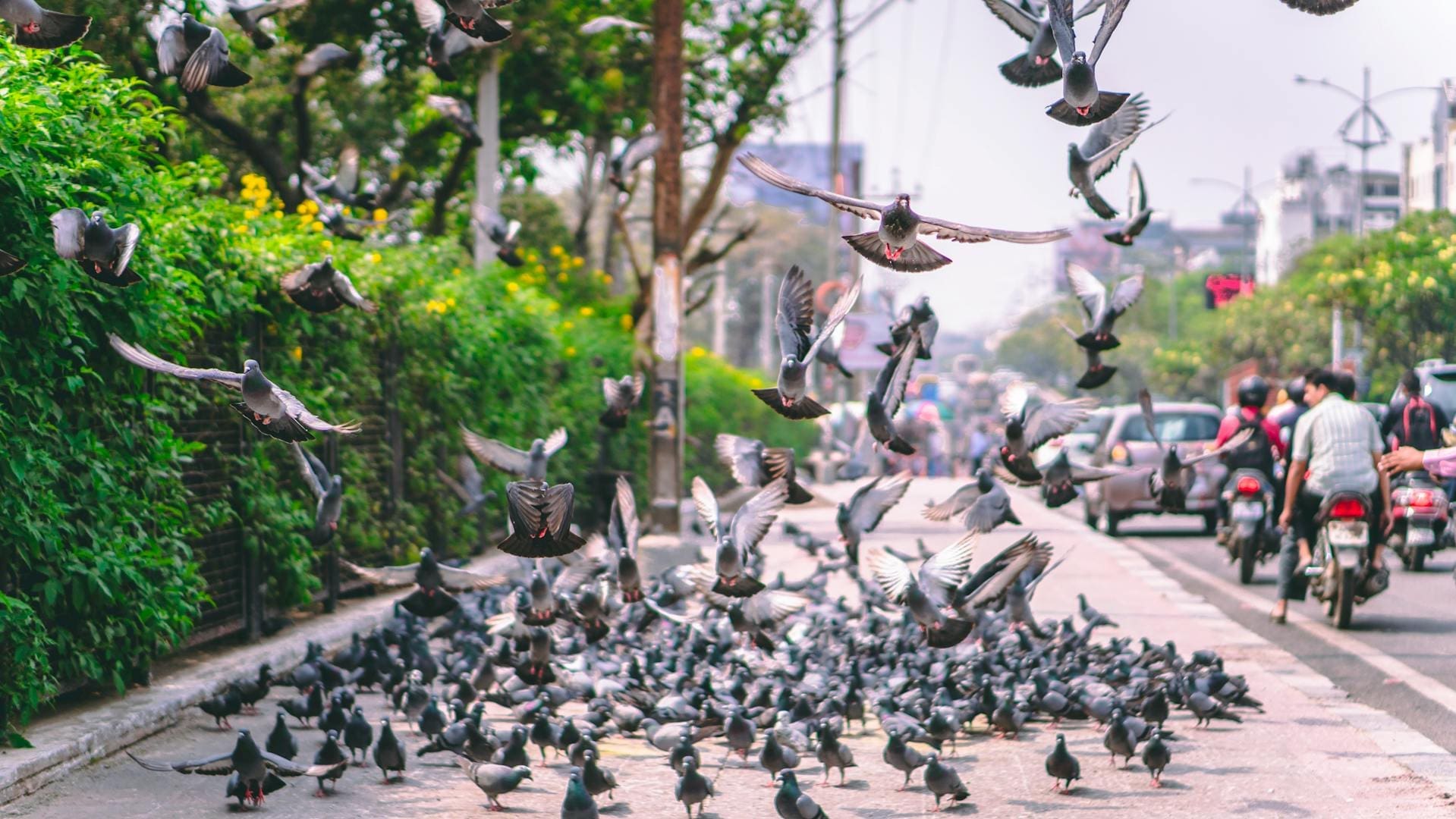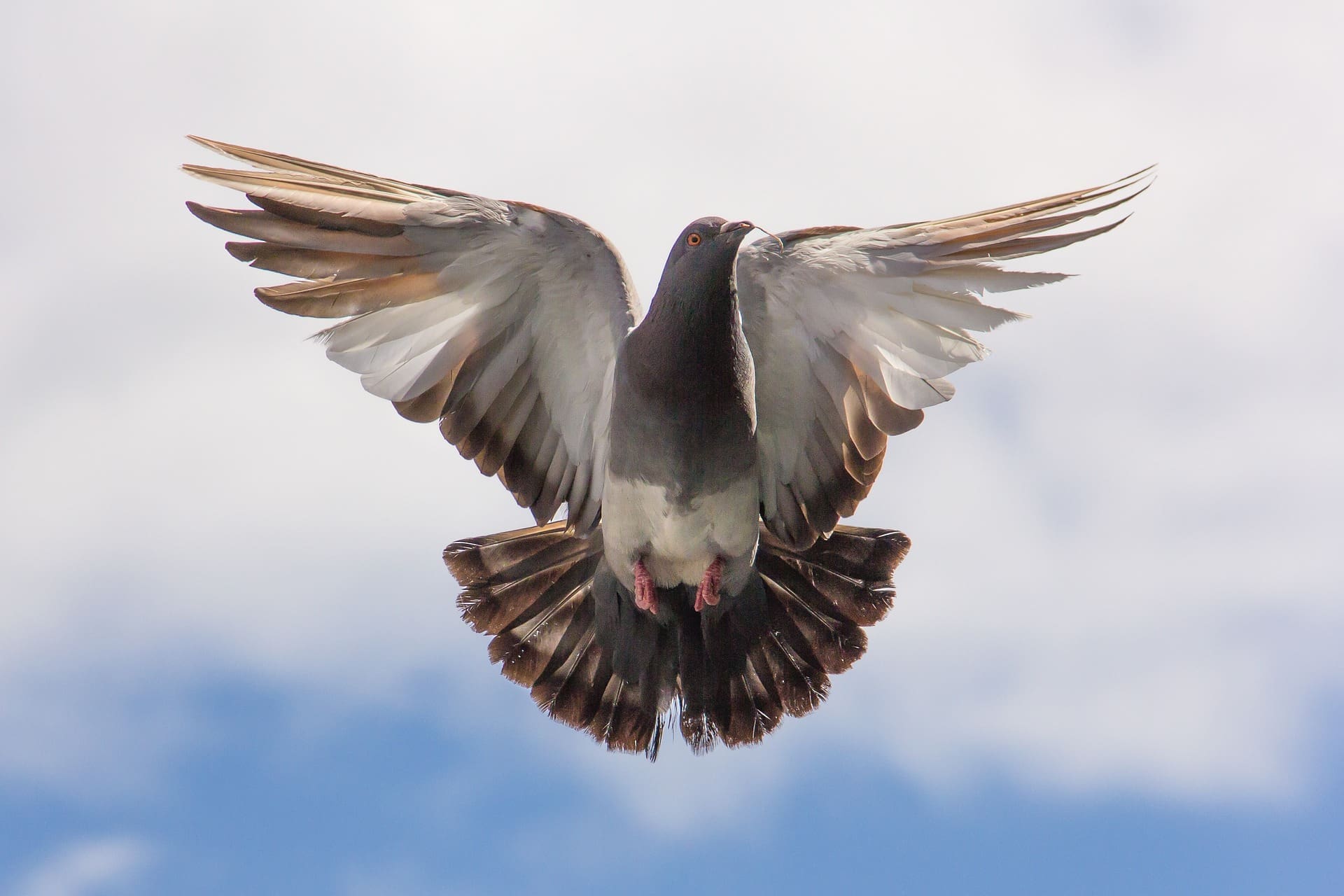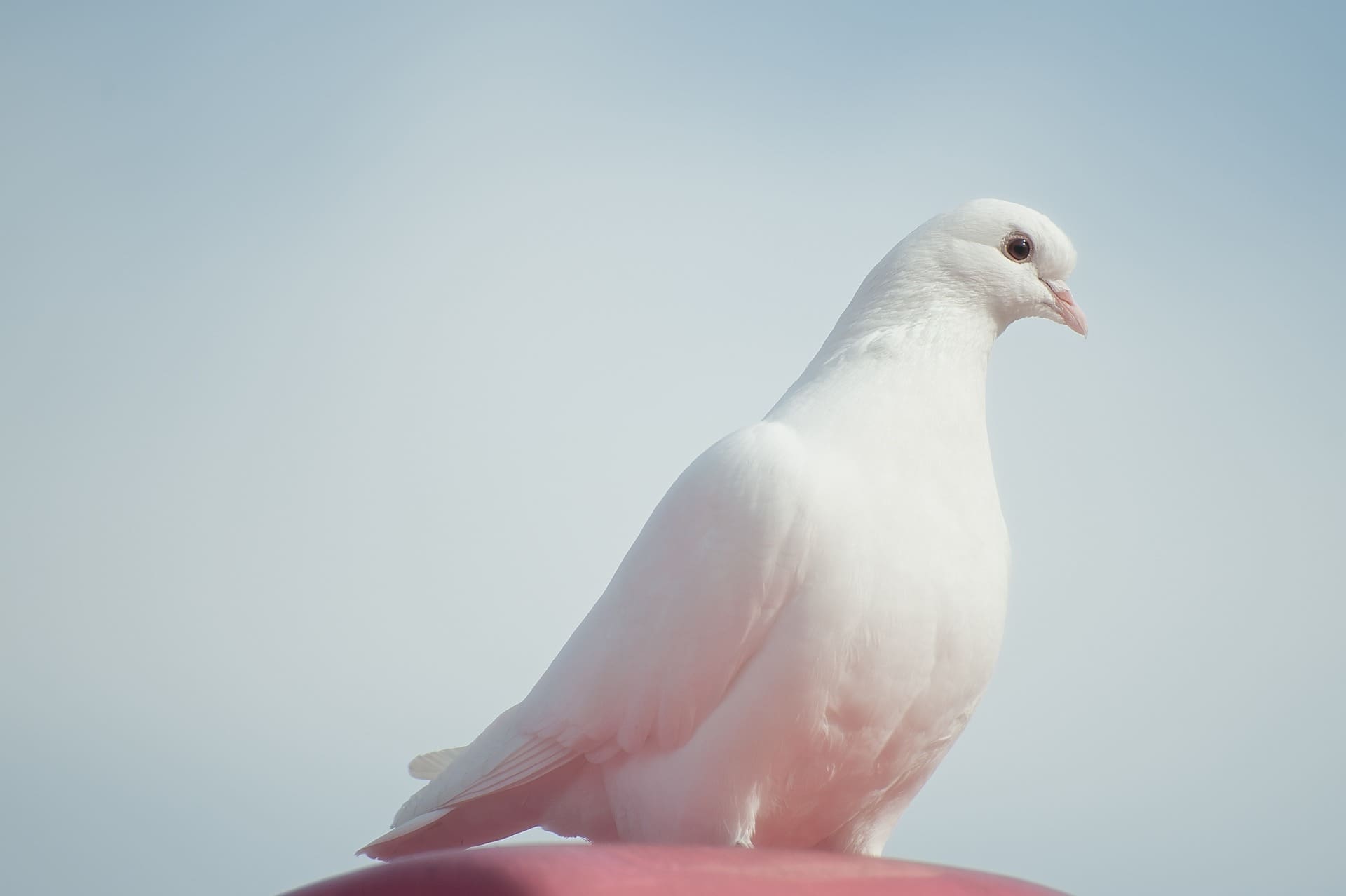What often-overlooked creature is an expert navigator, an impressive postman, and a natural mammographer?
A pigeon!
While the term “pigeon” actually refers to over 300 species of bird of the family Columbidae, the animal is generally characterized by its plump body, head-bobbing strut, and gentle disposition. That, and the fact that they seem to be everywhere. Pigeons have adapted to the majority of habitats on earth, with the most impressive being the urban environment.
Rock pigeons, also known as city pigeons or common pigeons, were first introduced to North America in the 1600s, from Europe. Since then, they have come to inhabit nearly every city across the Americas.
Historical records in Mesopotamia and ancient Egypt suggest that pigeons were first domesticated around 5,000 years ago, making it nearly impossible to discern their original, wild range. Today, wild pigeons make homes of rocky cliffs or in caves, while their feral cousins nest on building ledges.
With some of the most powerful flight muscles in the animal kingdom, pigeons are impressive fliers with the ability to take off almost vertically and avoid any in-flight obstacle. This enables them to dwell in even the busiest urban environments.

Lovebirds!
Pigeons are monogamous, mating for life, and typically raise 1 to 2 chicks at a time. Their mating season is May through August in the Northern hemisphere, and co-parenting is key to the nestlings’ success. Dad usually takes the day shift while Mom takes the night watch, alternating incubation duties so the other can hunt for food or hit the McDonald’s drive thru.
In the first four or five days after hatching, the chicks are fed “pigeon milk,” a unique secretion of a portion of the parents’ digestive system called the “crop.” This milky liquid is rich in nutrients and closely resembles that of mammals’ milk. Crop milk production is a hormonal response that begins a few days before the eggs hatch. When the chicks are around 10 days old, the milk-producing cells return to their normal dormancy and hatchlings can ease into a normal pigeon diet. (This process isn’t unique to pigeons; flamingoes and some species of penguin also produce a milk-like substance for their hatchlings.) Four to six weeks later, pigeon chicks are semi-independent, freeing the mated pair to start another brood. A couple of common pigeons can raise up to 12 chicks (six pairs of eggs) in a single mating season.
Both Beauty and Brains
Due to both natural selection and human breeding, there are now over 300 species of pigeon cooing across the globe. They are all descendents of the humble rock pigeon.
Charles Darwin, a pigeon breeder, marveled at the beauty of evolution at work in the range of appearance and genetic expression in pigeons, calling it an analogy of what happens in nature. Many species of wild pigeon have developed flamboyant colors and crests that rival that of anyone’s favorite bird. Check out the photos below for some beautiful displays!

Pigeons are more than just looks, though. They’ve managed to take on a variety of human tasks with ease, often outperforming their human and technological counterparts. Pigeons have been carrying mail for centuries, back to ancient Roman times, and can deliver mail at speeds of up to 90 miles per hour (their average flight speed being 50-60 mph). They were even employed as military spies, with 95% of pigeons completing their missions and returning photographs of enemy operations to their side in WWI. The key to their impressive performance is their ability to tap into earth’s magnetic field.
They can also read the position of the sun, and have a keen sense of sight and smell. Their acute eyesight also makes them, unexpectedly, great mammographers. Pigeons can diagnose breast cancer in human patients with an accuracy on par with human radiologists reviewing the same cases.
So maybe the next time you hear someone refer to pigeons as “sky rats,” take a moment to share about some of the brilliance behind those red eyes.
Humbly,
Ryan

Ryan Pagois is a climate advocate and systems thinker serving as an Associate Director at Built Environment Plus, helping to drive sustainable building solutions in MA. He is passionate about urban ecology, carbon balance, and rewilding cities. He is excited to pursue a Masters of Ecological Design at the Conway School starting this fall, to explore how low-impact urban development can be our greatest climate solution and community resilience tool. He grew up in Minnesota and studied environmental policy and international relations at Boston University.
Sources and Further Reading:
https://www.britannica.com/animal/pigeon
https://www.allaboutbirds.org/guide/Rock_Pigeon/overview#
https://www.nationalgeographic.com/animals/article/pigeons-diversity-doves-photographs
https://www.ovocontrol.com/pigeon-facts-figures
https://www.ovocontrol.com/news-blog/2018/01/how-fast-do-pigeons-reproduce
https://www.spymuseum.org/exhibition-experiences/about-the-collection/collection-highlights/pigeon-camera/
https://www.northumberlandnationalpark.org.uk/pigeon-perfect/
https://www.universityofcalifornia.edu/news/pigeons-can-distinguish-cancerous-breast-tissue-normal
https://www.audubon.org/field-guide/bird/rock-pigeon
https://www.audubon.org/news/pigeon-milk-nutritious-treat-chicks
https://www.nytimes.com/2013/02/05/science/pigeons-a-darwin-favorite-carry-new-clues-to-evolution.html










